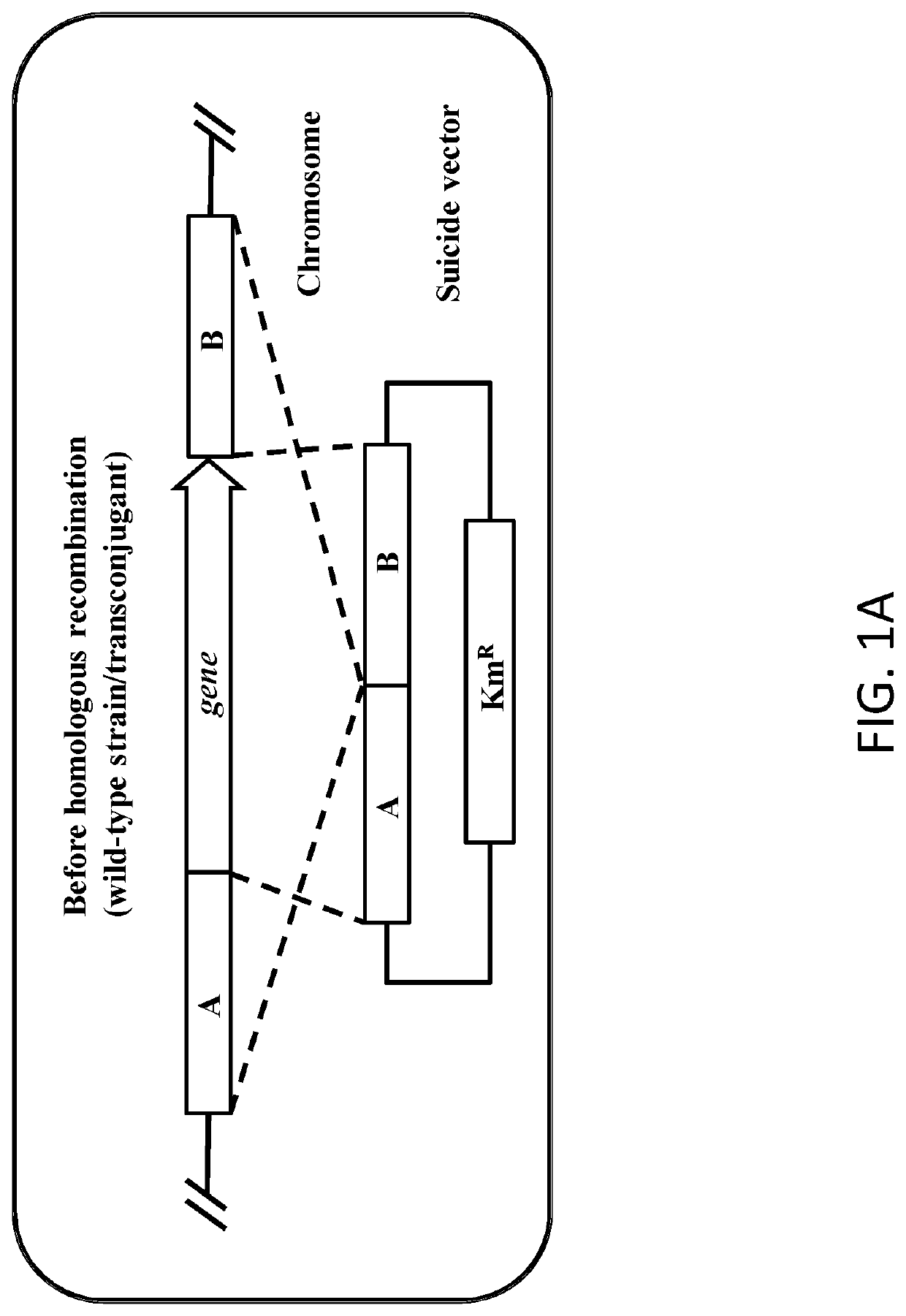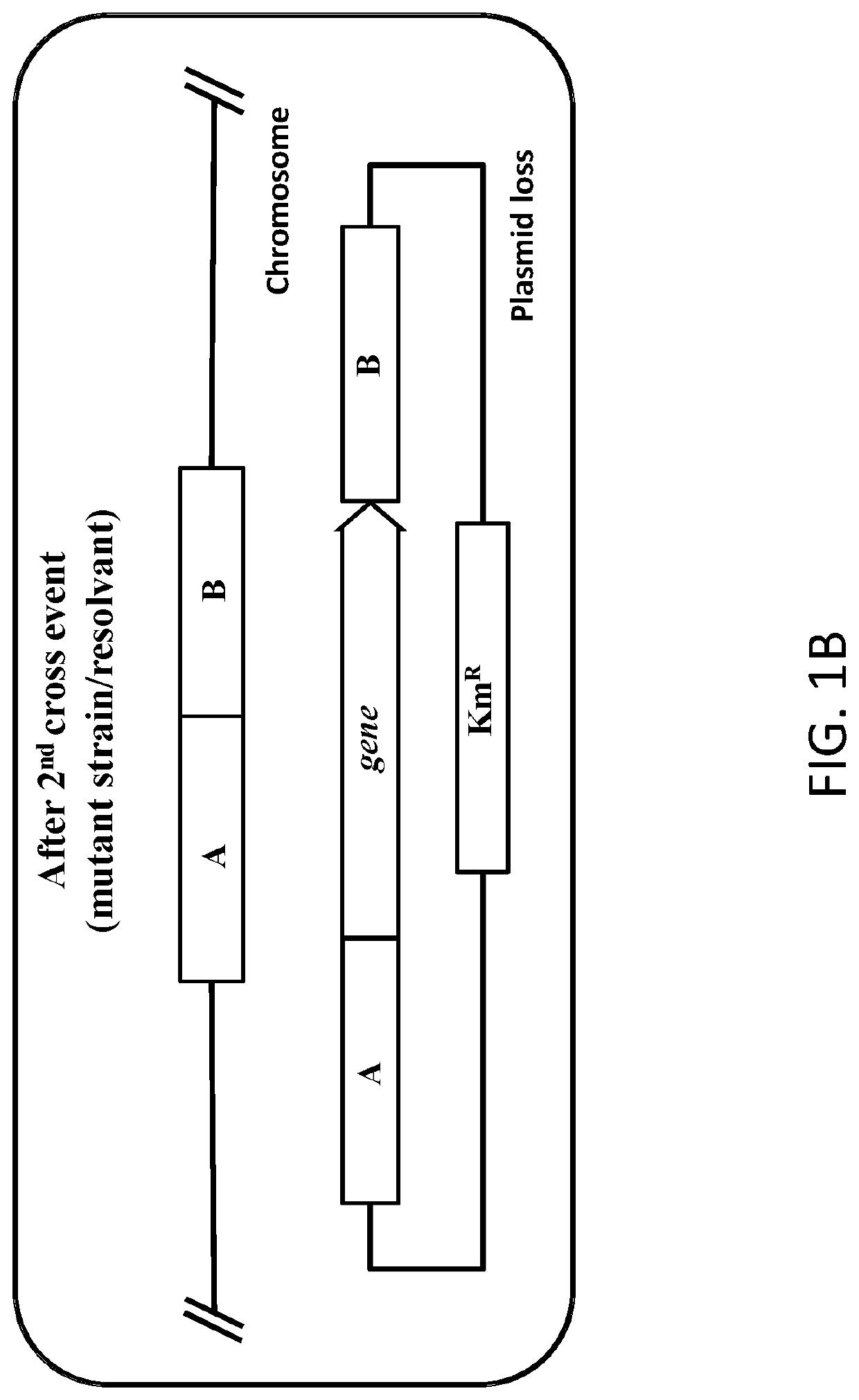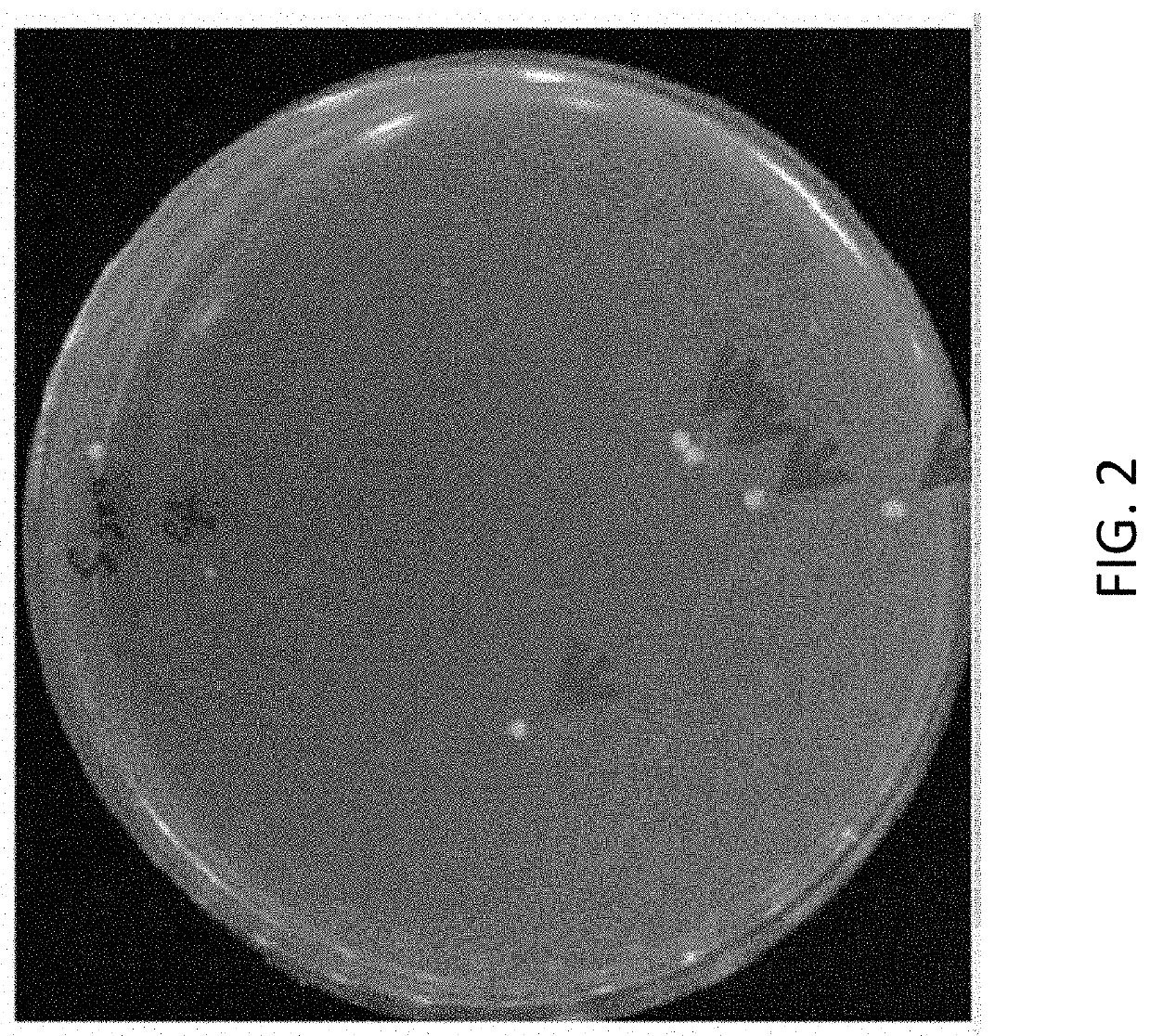Recombinant Microorganism for Producing 2,3-Butanediol and a Method of Production of 2,3-Butanediol
a technology of microbial fermentation and recombinant microorganisms, which is applied in the direction of acyltransferases, enzymology, transferases, etc., can solve the problems of low productivity of 2,3-butanediol production by microbial fermentation, high cost of 2,3-butanediol production by biological fermentation method, and serious pollution
- Summary
- Abstract
- Description
- Claims
- Application Information
AI Technical Summary
Benefits of technology
Problems solved by technology
Method used
Image
Examples
first embodiment
[0061]In the present invention, the mutant plastids are constructed.
[0062]The upstream sequence and the downstream sequence of the target gene of the amplified polymerase chain are DNA fragmentation of 1,000 base pair (bp), and primer sequence in the polymerase chain reaction is shown in Sequence Listing 1.
Sequence Listing 1 - Primer sequence inpolymerase chain reactionPrimerPrimerSEQ IDnamesequenceNO.acoA_upATGAATTCTGAAGCGATCTTCATGCCCSEQ ID(F)NO. 1acoA_upATTCTAGAAAGGTCACCCAGGCGGGSEQ ID(R)NO. 2acoA_downATTCTAGACGCTGCCTACCCGGCTCSEQ ID(F)NO. 3acoA_downATGATATCAGCACTTGACGGACGGCSEQ ID(R)NO. 4glgC_upATGAATTCACTGTTCGAGGCTATCCGCSEQ ID(F)NO. 5glgC_upATGGTACCCGGATCGTTTTTTTCAAGCSEQ ID(R)NO. 6glgC_downATGGTACCAAACAGGAGCGCTAATGCSEQ ID(F)NO. 7glgC_downATTCTAGAGCCCACTTTGCCTGGATGTSEQ ID(R)NO. 8ldhA_upATGATATCTAAGACGCGGGCTCTCCTGSEQ ID(F)NO. 9ldhA_upATGGTACCCCGCGATTTTCATAAGACTSEQ ID(R)NO. 10ldhA_downATGGTACCCTGATCAGCATTTCGGAGASEQ ID(F)NO. 11ldhA_downATGAATTCTACTTCCCCTCTCGACGCCSEQ ID(R)NO. 12pdeC_upT...
second embodiment
[0066]In the present invention, the recombinant strain is constructed.
[0067]The mutant plastids of the first emdboimdnet are transformed and send to E. coli S17-1 λpir to produce E. coli strain, and the recombinant strain consisting of the target gene is produced by gene knockout of the homologous recombination.
[0068]For instance, the natural mutant S1 of the streptomycin is the recipient strain in the conjugation, and a give strain is E. coli S17-1 λpir consisting of recombinant plastid for pYC094 mutation (kanamycin and ampicillin), the colonies are cultivated overnight in the LB medium consisting of antibiotic and are centrifuged to collect the bacteria. The bacteria are washed two times with physiological saline, mixed at a proportion 2:1 (give strain: recipient strain), centrifuged, and coated on nitrocellulose membrane (NC membrane) of the LB culture medium, wherein the bacteria are cultivated overnight in the temperature of 37° C., and the NC membrane is selected and is put i...
third embodiment
[0082]In a third embodiment, growth conditions of the recombinant strain are compared, wherein the natural mutant S1 and the recombinant strains S1U1, S1U1D1, S1U1D2, S1U1D3, S1U1D4, and S1U1D5 are cultivated in M9 culture medium consisting of 5% glucose and is shocked in a rotation speed of 200 rpm in a temperature of 30° C., wherein an absorbance value of a bacterial solution OD595 is measured for every two hours. FIG. 10 is a diagram showing a growth curve of the recombinant strains S1U1, S1U1D1, S1U1D2, S1U1D3, and S1U1D4, wherein growing speeds of the recombinant strains S1U1, S1U1D1, S1U1D2, S1U1D3, and S1U1D4 are similar, but the recombinant strain S1U1D5 grows more slowly than other recombinant strain in first 30 hours, and its growing speed is similar to the growing speeds of the other recombinant strains.
[0083]FIG. 11 is a diagram showing growth curves of the natural mutant S1 and the recombinant strain S1U1, wherein the growth curves of the natural mutant S1 and the recom...
PUM
| Property | Measurement | Unit |
|---|---|---|
| temperature | aaaaa | aaaaa |
| temperature | aaaaa | aaaaa |
| temperature | aaaaa | aaaaa |
Abstract
Description
Claims
Application Information
 Login to View More
Login to View More - R&D
- Intellectual Property
- Life Sciences
- Materials
- Tech Scout
- Unparalleled Data Quality
- Higher Quality Content
- 60% Fewer Hallucinations
Browse by: Latest US Patents, China's latest patents, Technical Efficacy Thesaurus, Application Domain, Technology Topic, Popular Technical Reports.
© 2025 PatSnap. All rights reserved.Legal|Privacy policy|Modern Slavery Act Transparency Statement|Sitemap|About US| Contact US: help@patsnap.com



